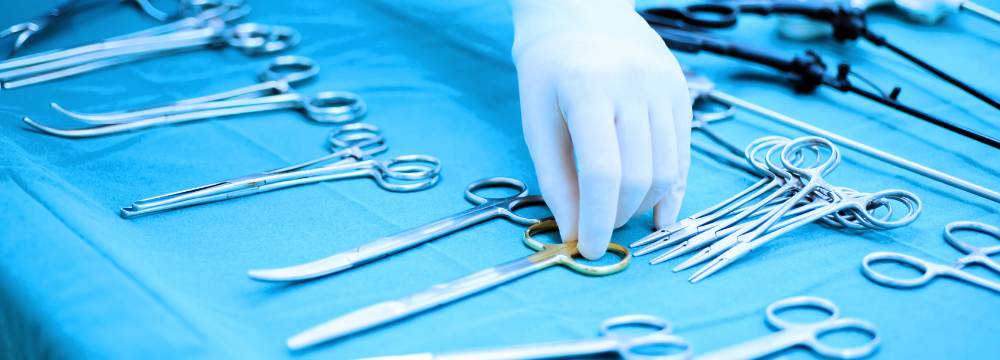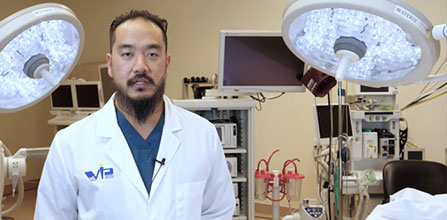Do We Reinforce a Sleeve or Bypass Staple Line

When you watch an online seminar and first come in for a consultation, having decided that bariatric surgery may be the right option, you will undoubtedly hear about the potential risk of a staple line leak. This can be a severe complication after a stapled bariatric surgery like the gastric sleeve, gastric bypass, and duodenal switch. Derivative surgeries, like mini gastric bypass, one-anastomosis gastric bypass (OAGB), or single anastomosis duodeno-ilesostomy (SADI), also have the potential for this complication because they all divide the stomach.
If you’re reading this, you’ve done a good amount of research on bariatric surgery, and it is worth understanding the risks of leakage and precisely what we do to prevent or treat it. So, congratulations on doing your best to understand the surgery and what it entails.
How Is the Stomach Divided, and Why Can It Leak?
The stomach is divided with a cutting-stapling device in all the above surgeries. The gastric bypass separates approximately 80% of the stomach, leaving only a small pouch to receive food. The cutaway portion of the stomach remains within the abdomen, and the small intestines are directly connected to the small stomach pouch. This is similar to the OAGB or mini gastric bypass, though the latter has an elongated stomach pouch receiving food. On the other hand, the gastric sleeve, duodenal switch, and SADI involve cutting the stomach along the greater curvature and entirely removing the cut-away portion of the gastric pouch. In all cases, we place a three-row staple line along either side of the division, offering a tight and long-lasting seal against leakage.
The leak rate associated with both the gastric bypass in the gastric sleeve has improved due to advances in technology and technique. Leaks from the gastric bypass are usually not due to technical issues associated with the surgery but can be associated with many factors, including medical problems that impede healing. However, the risk of a leak is somewhat higher because there is so much more to staple and suture. It’s also essential to remember that during a gastric bypass, two areas of anastomosis (where sutures connect two pieces of tissue) can leak. The mini gastric bypass / OAGB only requires one anastomosis where there can be leakage.
The gastric sleeve, despite its simplicity, has some variance in how the procedure is performed. Some surgeons leave more of the stomach, while others cut a smaller pouch. An inexperienced surgeon can misplace the suture line or injure the stomach causing additional concerns. Smaller sleeves – although tempting to do because you may think it allows for more weight loss – are associated with higher leak rates without significant improvements in weight outcomes. Standardizing the gastric sleeve technique and employing experienced surgeons like Dr. Tsuda can minimize these potential concerns. That said, leak rates are often quoted from less than .5% to up to 3%1,2
Do We Reinforce the Staple Line?
Reinforcement of the staple line by over stitching, using glue, biologic or synthetic tissue is primarily left to the surgeon’s discretion. However, the relatively rare occurrence of leaks usually means we do not need to reinforce the staple line. Some patients also wonder if upper G.I. testing should be performed routinely. If we believe there is an increased risk of leakage due to any number of anatomical or lifestyle considerations, we will perform an upper GI.
There is also the option to insufflate or fill the gastric pouch with air or water to see any leakage. Once again, this is discretionary and depends on the surgeon’s preference and what they know about the patient’s anatomy.
Virtually all studies have shown no difference in leak rate between reinforced and non-reinforced staple lines.3
When Do Leaks Happen?
Few leaks happen immediately after surgery or while the patient is hospitalized.2. Leaks typically occur five or more days after surgery, up to even six weeks. Therefore, you must understand the symptoms of gastric leakage, including rapid heart rate, intense stomach pain, abdominal pain, fever, nausea, and lethargy. Your postoperative packet will have a complete list of what to look out for in case this rare complication does occur.
How Are Pouch Leaks Treated?
In an otherwise healthy individual, some stomach leaks can be treated by non-surgical means, including a modified diet, anti-microbial medication, and other therapies your surgeon will discuss. However, since many patients undergoing bariatric surgery are already in compromised general health, the fix is often a follow-up surgical procedure to initially address any infection within the abdomen. Non-invasive therapies such as endoscopies (camera scopes placed through the mouth into the stomach) most often allow therapies for the leak without requiring further complicated surgeries. While a leak can be dangerous, proper aftercare and awareness reduce the risk dramatically.
Should I Be Worried About a Gastric Leak?
In our practice, these are extremely rare. However, no matter how the stomach is stapled, there is always the possibility of a leak due to issues beyond the technical performance of the procedure. This is where Dr. Tsuda and VIPSurg differentiate themselves from the typical bariatric practice. After surgery, patients can contact Brian and Dr. Tsuda themselves if they have any questions or concerns.
For more information about the potential risks of your bariatric procedure and which procedure may be the best option for you, we encourage you to call our office, watch our online seminar and ultimately schedule a consultation with our practice. You will meet with Brian Grace, our PA, and Dr. Tsuda before your surgery, at which time you can ask any questions on your mind.
Resources:
- 1Praveenraj P, Gomes RM, Kumar S, Senthilnathan P, Parthasarathi R, Rajapandian S, Palanivelu C. Management of gastric leaks after laparoscopic sleeve gastrectomy for morbid obesity: A tertiary care experience and design of a management algorithm. J Minim Access Surg. 2016 Oct-Dec;12(4):342-9. doi: 10.4103/0972-9941.181285. PMID: 27251808; PMCID: PMC5022516.
- 2 Abou Rached A, Basile M, El Masri H. Gastric leaks post sleeve gastrectomy: review of its prevention and management. World J Gastroenterol. 2014 Oct 14;20(38):13904-10. doi: 10.3748/wjg.v20.i38.13904. PMID: 25320526; PMCID: PMC4194572.
- 3 Knapps J, Ghanem M, Clements J, Merchant AM. A systematic review of staple-line reinforcement in laparoscopic sleeve gastrectomy. JSLS. 2013 Jul-Sep;17(3):390-9. doi: 10.4293/108680813X13654754534639. PMID: 24018075; PMCID: PMC3771757.



